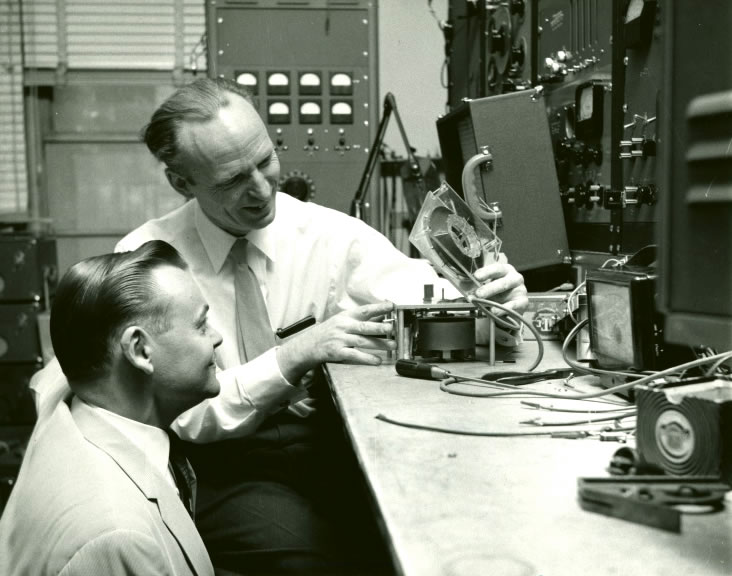John Breuel, AFB employee, and another man check a magnetic tape cartridge at the American Foundation for the Blind, 1957. Talking Book Archives, American Foundation for the Blind.
Talking Book technology continued to evolve. In the 1950s and '60s, trials took place to test various record sizes and flexibility. Machines were developed with three speeds, detachable lids, and freestanding speakers. Alternative Talking Book formats such as reel-to-reel and cassette tapes came into common use, with cassette tapes becoming ever more prevalent in the 1970s; by the 1980s they were the dominant distribution medium.
In May 1997, the National Library Service for the Blind and Physically Handicapped (NLS), AFB and other blindness organizations and Talking Book producers met to begin the process of developing a standard for a digital Talking Book system. The representatives contributed expertise in the areas of standards development, engineering, consumer electronics, software/hardware development, library service, audio book production, international compatibility, information access, universal design, and accessibility technologies.
A decade after this meeting NLS had begun phasing out cassettes as a distribution medium. The transition to a fully digital system that distributes titles on Flash memory cards is expected to be completed by 2012. Read more about the NLS pilot digital book program in "Reading into the Future."
